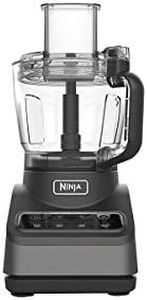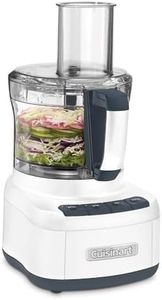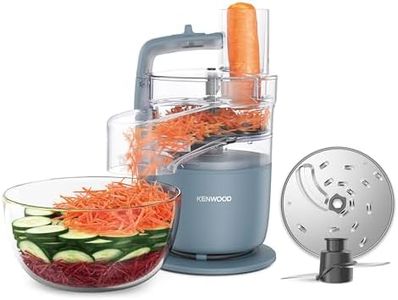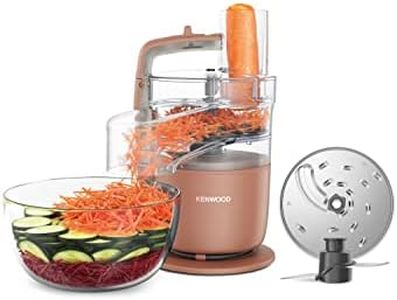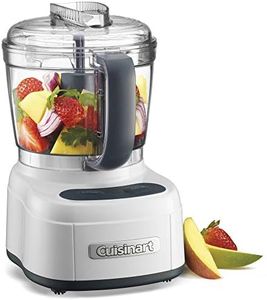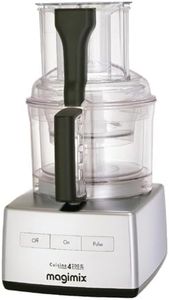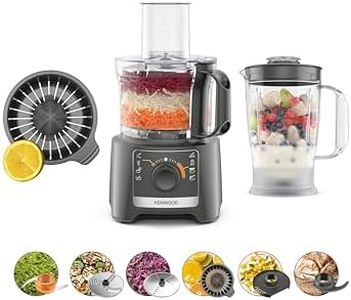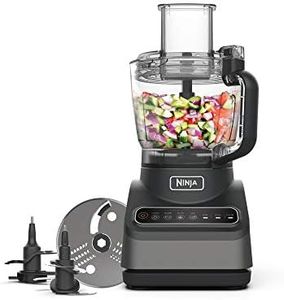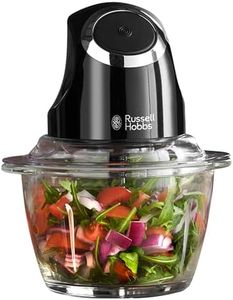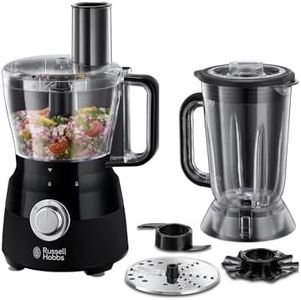We Use CookiesWe use cookies to enhance the security, performance,
functionality and for analytical and promotional activities. By continuing to browse this site you
are agreeing to our privacy policy
10 Best Small Food Processors
From leading brands and best sellers available on the web.By clicking on a link to a third party's website, log data is shared with that third party.
Buying Guide for the Best Small Food Processors
When choosing a small food processor, it's all about matching the appliance to your kitchen habits and lifestyle. A good food processor can chop, blend, puree, and mix ingredients quickly, making meal prep easier and more efficient. Since small food processors are compact, they are ideal for those with limited storage space or those who typically prepare smaller meals. When shopping, it's crucial to focus on key features that impact usability, versatility, and convenience, ensuring your choice fits your particular cooking style.CapacityCapacity refers to how much food the processor can handle at one time, usually measured in cups or liters. This is important because it determines how much you can process without needing to do multiple batches. Small food processors generally range from 1 to 4 cups. If you usually prep sauces, herbs, or single servings, a 1–2 cup capacity is enough. For small families or bigger single meals, 3–4 cups offer more flexibility without taking up too much space. Consider how much food you typically need to process to choose the right size.
Motor PowerMotor power, measured in watts, shows how strong and capable the food processor is at handling tough ingredients. A stronger motor can chop nuts, raw vegetables, and even knead dough better than a weaker one. For small food processors, motors usually range from 150 to 400 watts. Lighter tasks like making dips, dressings, or just chopping soft veggies are fine with lower wattage. If you want to process harder foods or do more demanding tasks, go for the higher end of the range. Think about the hardest jobs you want your processor to do and match the motor strength to that need.
Blades and AttachmentsBlades and attachments define what tasks the food processor can do, like chopping, slicing, shredding, or mixing. Some come with just a basic stainless steel chopping blade, while others include discs for slicing or shredding. Simpler models with a single blade are great if you mainly need basic chopping or pureeing. If you want to experiment with different food prep tasks, look for processors with extra blades or disks. Reflect on which kitchen jobs are most common in your cooking, and check that the processor comes with tools for those.
Ease of CleaningEase of cleaning depends on the design: if parts are dishwasher safe and easy to take apart, you'll spend less time on cleanup. Since small processors are used for quick jobs, they should not require complicated cleaning. Check whether the bowl, lid, and blades can safely go in the dishwasher, and make sure there are no hard-to-reach spots that trap food. If you plan to use your processor often, easy cleaning will motivate you to use it more.
Controls and UsabilityControls and usability cover how simple the processor is to operate, including number of speed options and ease of assembly. Many small food processors have just one or two buttons (like 'pulse' and 'on'), which keeps things straightforward. If you value simplicity, go for a model with basic controls. However, if you want more control over texture, models with variable speeds might help. Think about whether you prefer a 'set it and forget it' approach or more precise results.
Build Quality and SafetyBuild quality determines how durable and stable the processor feels during use, and safety features (like locking lids) prevent accidents. Look for signs of sturdy construction—solid bases, secure lids, and rubber feet to prevent sliding. Most small processors have built-in safety locks to make sure the processor won't run unless assembled correctly. If you'll be using the processor often or with kids around, prioritize these safety and durability details.
